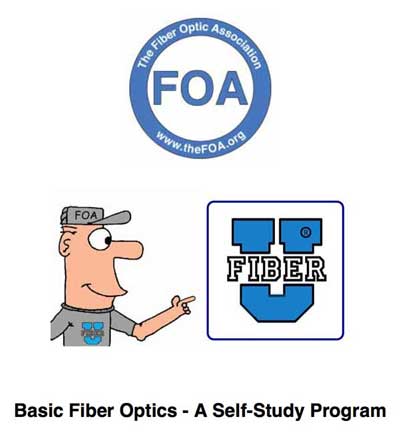Lesson #4, Fiber Optic Datalinks
FOA Reference Guide To Fiber Optics
And Study Guide To FOA Certification

Answers To Chapter Questions
Chapter 4 Quiz -Datalink
TRUE/FALSE
1. ANS: T
Most
systems operate by transmitting in one direction on one fiber and in
the reverse direction on another fiber for full duplex operation. It's
possible to transmit both directions on one fiber but it requires
couplers to do so and fiber is less expensive than couplers.
2. ANS: F
LEDs
have much lower power outputs than lasers. LEDs have much less
bandwidth than lasers and are limited to systems operating up to about
250 MHz or around 200 Mb/s.
MULTIPLE CHOICE
3. ANS: B
As many premises systems using multimode fiber have exceeded bit rates of 1 Gb/s, lasers (mostly VCSELs) have replaced LEDs.
4. ANS: A
The
restricted launch of the VCSEL or any laser makes the effective
bandwidth of the fiber higher, but laser-optimized fiber, usually OM3,
is the choice for lasers.
5. ANS: A
Silicon photodiodes are used for short wavelength links (650 for POF and 850 for glass MM fiber).
6. ANS: C
Long
wavelength systems usually use InGaAs (indium gallium arsenide)
detectors as they have lower noise than germanium which allows for more
sensitive receivers.
7. ANS: D
In
telephony, fiber amplifiers combine with DWDM (dense wavelength
division multiplexers) to overcome the inefficiencies of DWDM couplers
for long haul transmission.
The typical fiber amplifier works in the 1480-1650 nm band.
MULTIPLE RESPONSE
8. ANS: C, D
See table: Typical Fiber Optic Source Specifications
9. ANS: A, B, C
See table: Typical Fiber Optic Source Specifications
- Next: Lesson 5: Optical Fiber
Return to Lesson Plan
|

